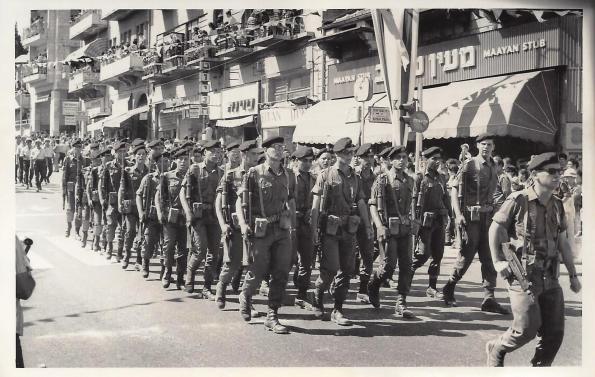The unifying practice of holiday pilgrimage is back in vogue. Israelis will march together to Jerusalem once again.
Israelis are renewing the ancient biblical tradition of making a pilgrimage to Jerusalem over the Sukkot holiday, as thousands will converge for a two-day hike through Israel that will end in Jerusalem. The pilgrimage signified the unity of the Jewish People, and this year the unique sense of harmony will be experienced again.
Old-New Tradition
The State of Israel and the IDF had already reinstated this custom during the state’s first years. The first four-day march took place in 1955. Military units, youth groups and citizens from various backgrounds came together and camped out in the Judean Hills on the way to Jerusalem. After arrriving in the capital, they held a massive procession through the streets.
After the Six-Day War, the march was scaled back to three days, and eventually, in 1975, after the Yom Kippur War, it turned into a symbolic walk around Jerusalem.
Unity and Not Discord
In the wake of Operation Protective Edge and the kidnapping and murder of the three Israelis teenagers during the summer of 2014, the 3,000-year-old unifying practice was reinstated.
In 2014, some 10,000 participants, including families and youth, participated. They were hosted during the journey in different sukkahs (traditional makeshift structures), with activities that connect among participants from different backgrounds. Avi and Rachel Frenkel, the parents of Naftali, one of the murdered boys, marched alongside ministers and Members of Knesset. Israeli Arabs and Druze were represented as well.
The march, an initiative of the Meetchabrim (Hebrew for “connecting”) organization, is being funded by six government ministries. The organizers, who expect the participants to double the previous year’s number, told Israel Hayom: “The objective is to unify the people and Israeli society in the aftermath of Operation Protective Edge.
There is grave concern over divisiveness, ignorance and a disconnection between the different parts of Israeli society. The people taking part in the march prefer the things that bring the different parts of society together over the things that divide.”
Author: Aryeh Savir
Staff Writer, United With Israel
Watch the march from 1963:

